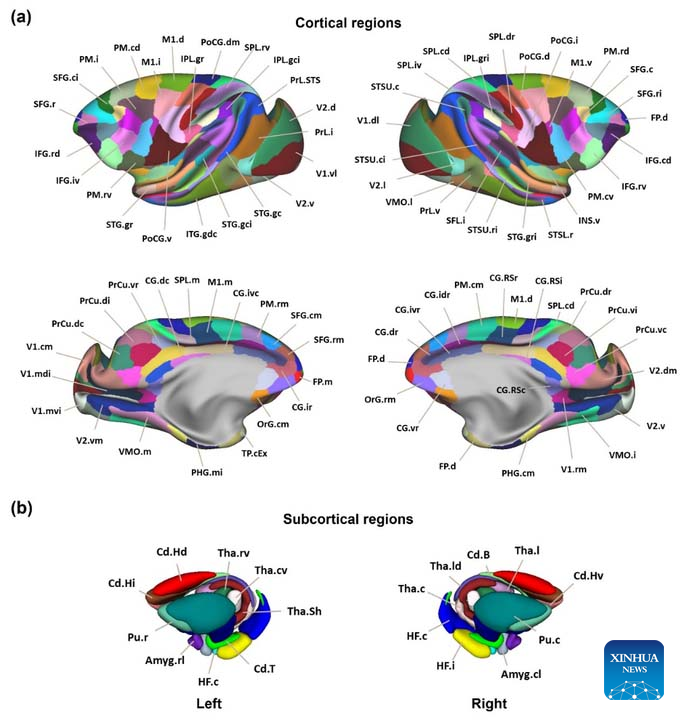
This image shows a novel network map of a macaque brain drawn by researchers from the Institute of Automation of the Chinese Academy of Sciences (CASIA). (CASIA/Handout via Xinhua)
BEIJING, May 14 (Xinhua) -- A Chinese research team has successfully drawn a novel network map of a macaque brain that will help explain the macroscopic organizational patterns of the human brain.
The map, created by researchers at the Chinese Academy of Sciences' Institute of Automation, divided the macaque brain into 304 distinct regions and quantitatively depicted the anatomical and functional connectivity patterns of each region.
Complex human behavior is driven by different functional networks in the brain. These networks are essentially collections of brain regions that communicate with one another through functional connections.
As macaques are highly similar to humans in terms of genetics, physiology and brain structure, the species is an ideal model for the study of the mechanisms of human cognitive function and can be used in the simulation of human brain diseases, said Jiang Tianzi, a researcher at the institute.
The panoramic brain map expressing the spatial organization of the macaque brain is an important research result as it can be translated for the study of the human brain, Jiang said.
It aids our understanding of brain function and will advance important research fields such as translational medicine, cross-species comparison and the digital modeling of the brain. ■



